French Provincial "Vineyard" Dining Table
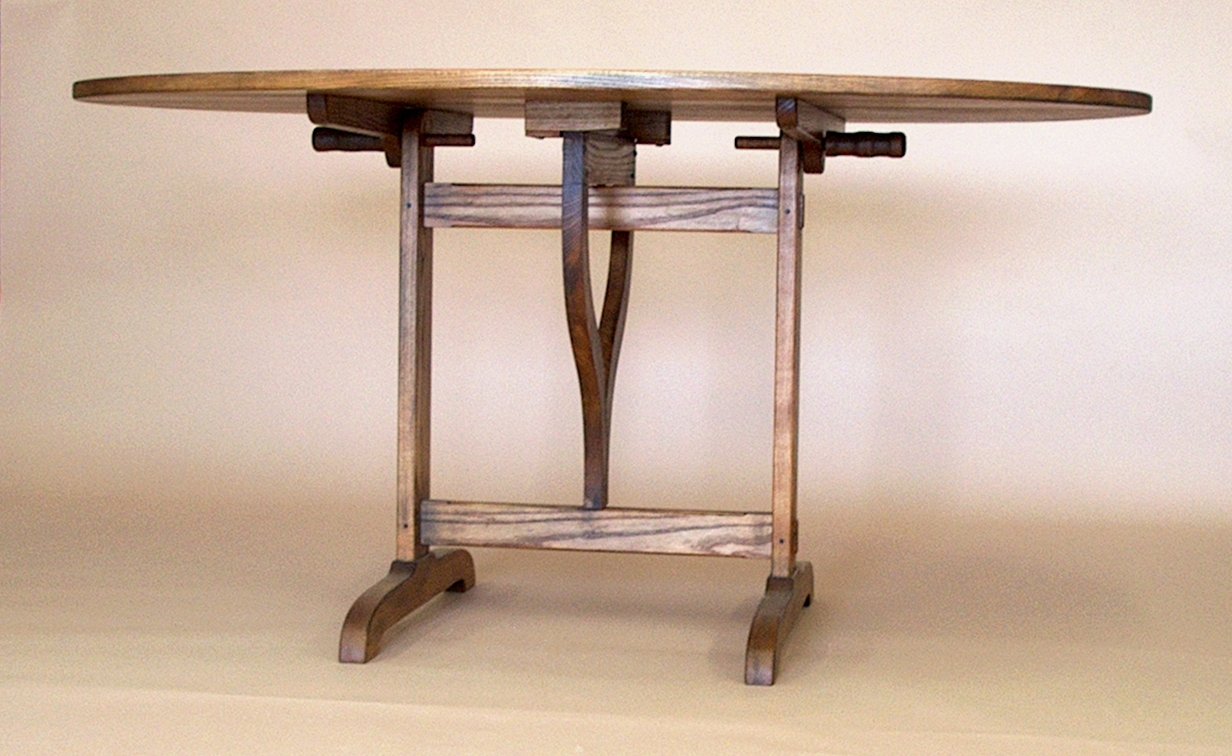
With an elliptal top measuring 60" by 46" and standing 30" off the floor, this table offers generous room for four and the convenience of room to store the chairs under the table. The ellipse requires less overall floor space, making the table better suited to smaller alcoves and breakfast nooks. The charm of the French Provincial style, graceful curves of the pivoting harp, and trestle base offer significant visual interest. This table would also be an excellent focal point on a screened porch or in a free standing pool house.
Conceptually, this table has fascinated me since I first read a construction article in Dining Tables by Kim Carleton Graves. With some excess ash on hand from another project and some unscheduled time, I decided to build one.
Little has been written about the style, but it apparently was popular in wine making regions of France in perhaps the 1800's. One or more times during the year, the public would come in for wine tastings, but the winery did not have a full time restaurant. Thus there was a need for tables that could be set up and taken down as needed. Reportedly, sometimes there was not even space for a permanent employee dining table.
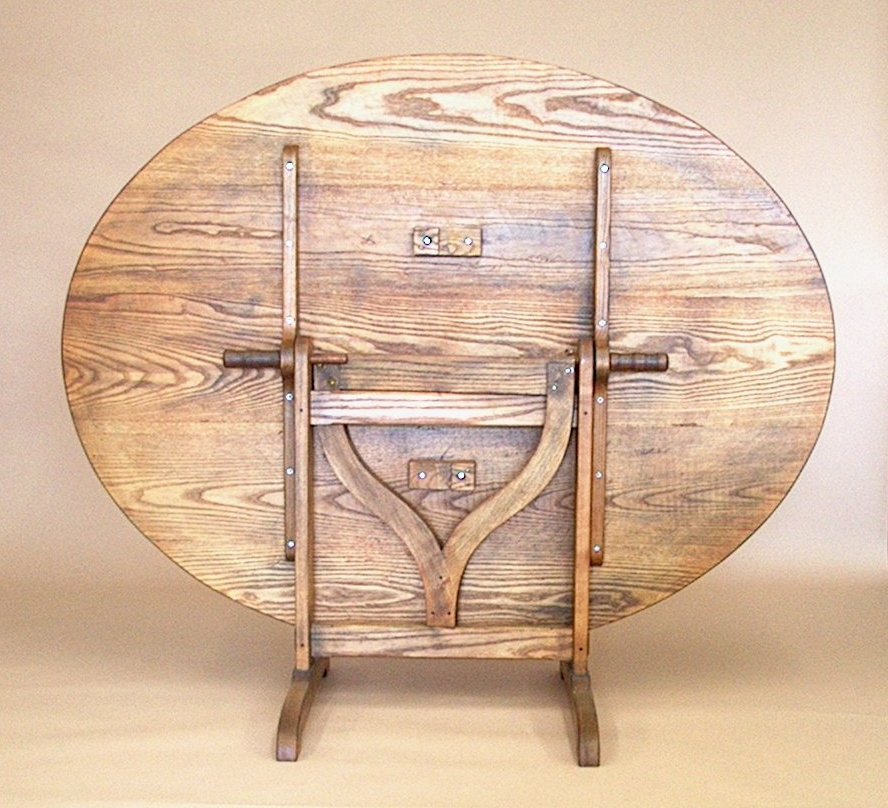
The few found examples of vineyard tables all have a pivoting harp or wishbone to hold the tabletop horizontal in use but allow it to stand up at other times. The trestle style base has a small footprint when the table is not in use, so the tables could be stored along a wall. The pivots serve as handles to lift and move the table, and the pivoting harp allows the tabletop to quickly and easily be changed between horizontal and vertical positions.
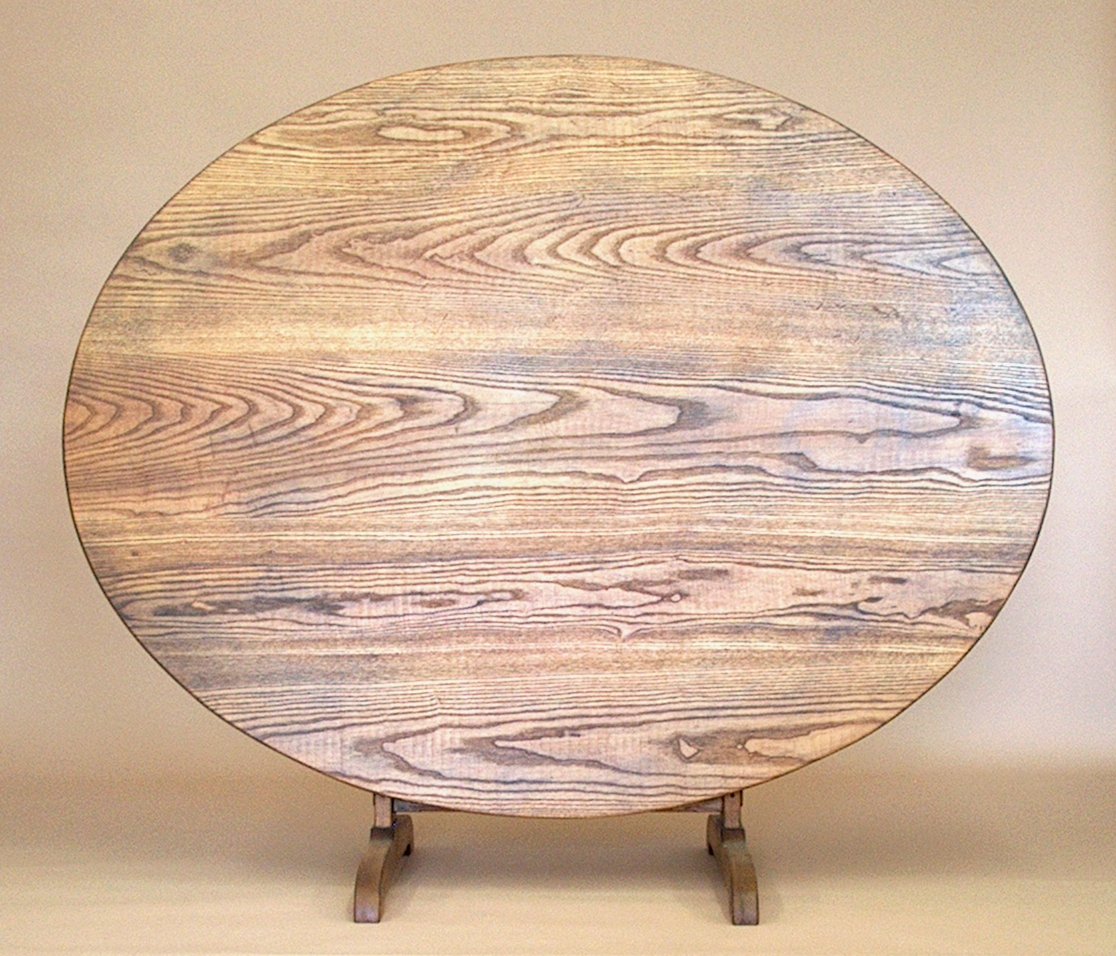
The ash boards for the top were selected and matched to be consistent with the more informal French provincial style. Because they are "flat sawn" the figure shows prominent ovals and ellipses, also called arches and cathedrals.
The intent was to let the grain and figure of the boards remain crisp and clear, so the finish started with a penetrating dye to even out the light and dark areas of the boards. Some planing marks and other distressing, as well as the grain, was highlighted with a dark brown glaze. Finally, age and use was simulated with a blackish brown glaze. So that the texture of the wood is discernable, protection is provided by four coats of an oil-varnish blend.
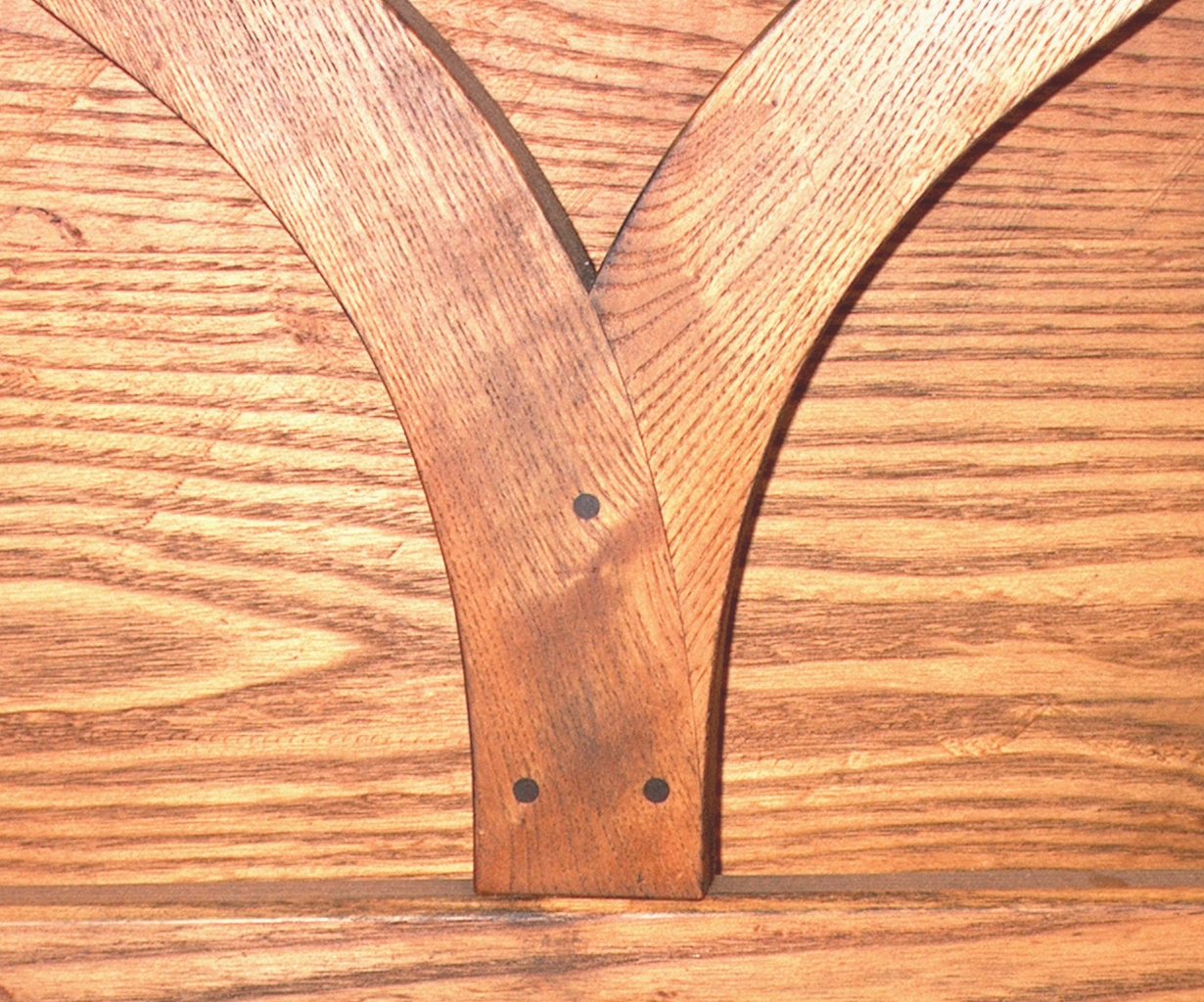
The only significant change between the plans in Dining Tables and the built table are in the curve and base of the harp. Several hours were given to drawing a more graceful curve and intersection of the two sides. The book described an easier construction model, but in the built table the curves are extended through the lap joint at the base.
The few found pictures of vineyard tables all show the same concept - a pivoting harp and a trestle base. Some have more curve and even decoration, others are much more utilitarian. One of the few descriptions suggested each was individually built by a particular winery's carpenter, explaining the design differences. Each base however is built of stout timbers, likely to better stand up to constant movement and hard use.
The book's design is a lighter one, well suited to single people and apartments. After it was built, intermediate and stout designs were conceptualized for those who might desire a more substantial look.
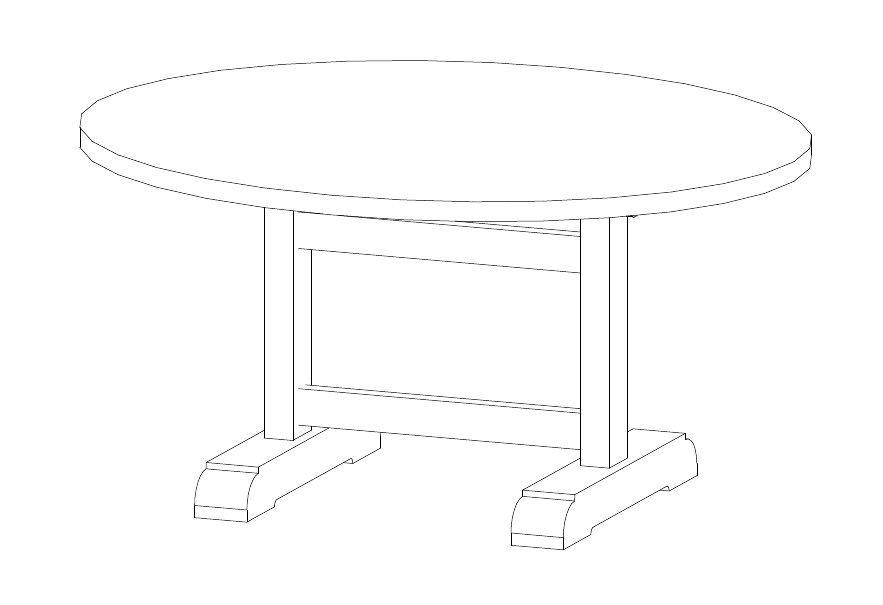
This drawing shows a similar table with a more typical stout foot, leg, and stretcher. (The harp has not yet been added.)
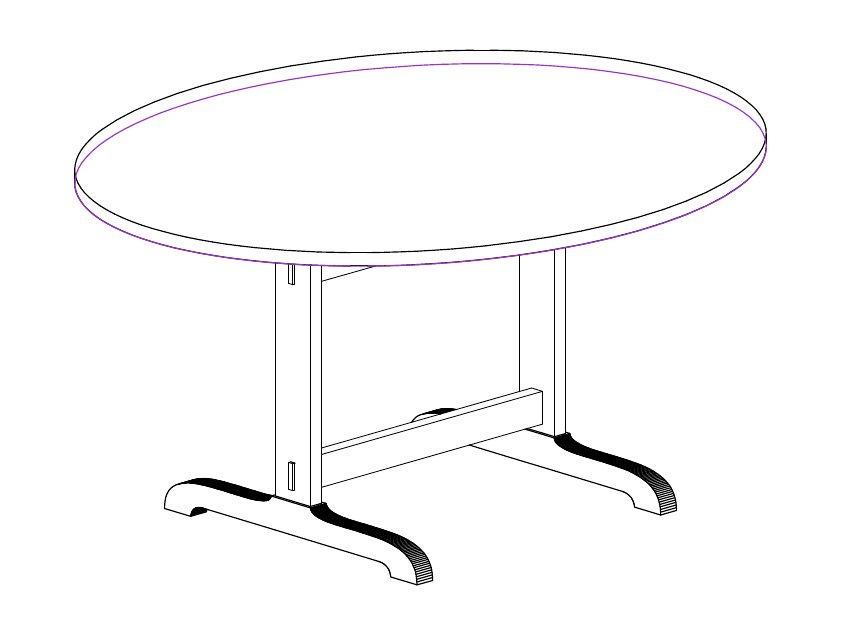
From a slightly different perspective, here is a table between the graceful and stout designs. (Again, a harp has not been included.)
Return to Desks and Tables page